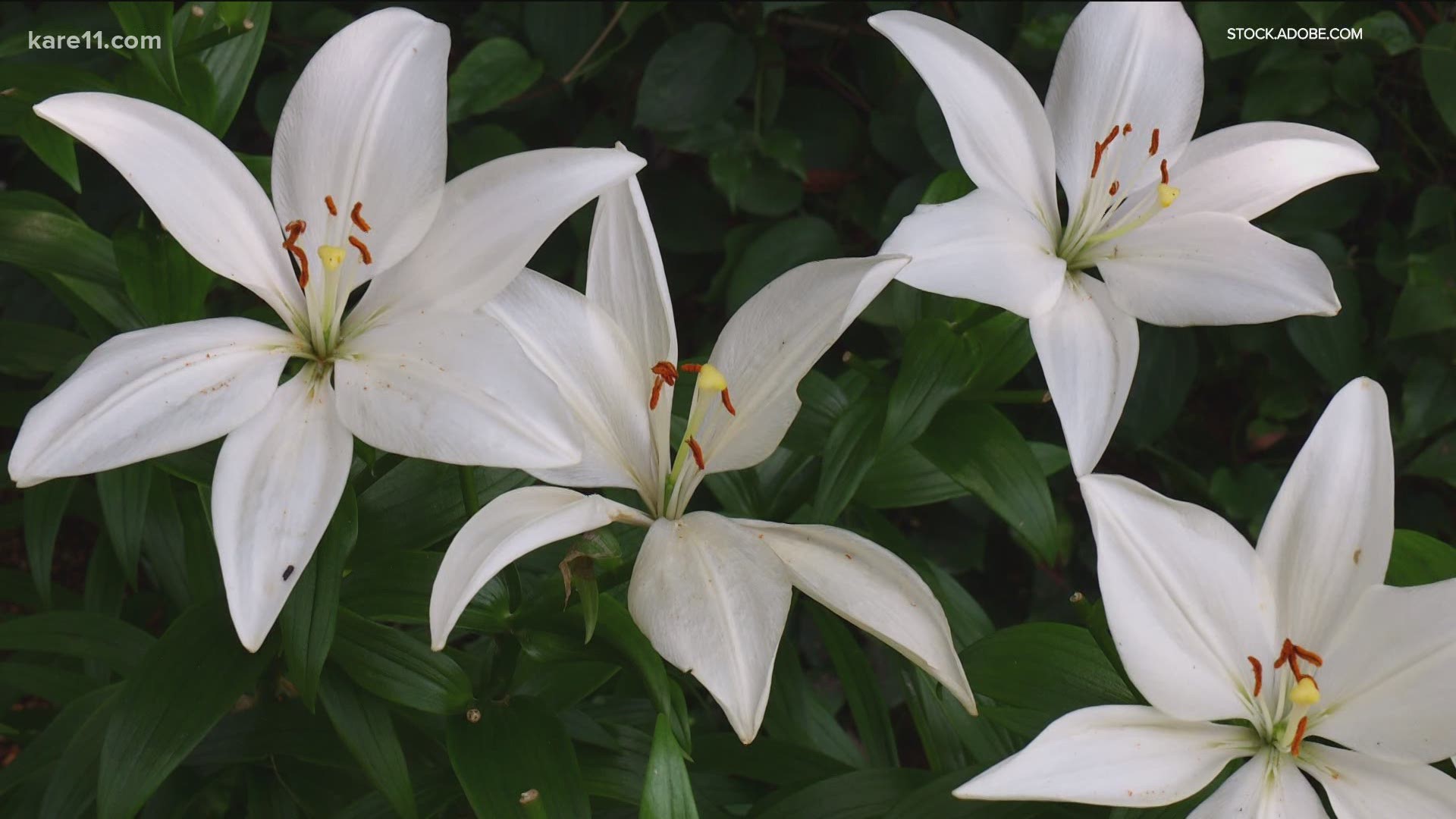GOLDEN VALLEY, Minn. — Just like some of us work the night-shift (I’ve been there) there are pollinators that pull the overnights too!
To support those moths, bats, beetles, and even some species of bees, you need a moon garden filled with flowers that bloom at night.
Most are annuals but there are a few perennials on the list too.
Moon frolic daylily and Toltec sundial daylily are two of the perennials that bloom in the dark, even though their names suggest otherwise. Moon frolic is a pretty lavender, while Toltec sun is bright yellow and fragrant. Both want full sun.
Casablanca Lily (Lilium oriental): are hardy perennials even in zone 3. They prefer sunny locations but shaded roots.
Chocolate daisy: (Berlandiera Lyrata) is hardy to zone 5 and sometimes 4. The chocolate-scented blooms shrivel in the daytime sun but reopen again at night from spring to frost. This is a great addition to a dry area of your garden. They don’t need much water.
Evening Primrose (Oenothera biennis): are a favorite in my garden with their buttercup-like yellow blossoms. Pollinated by the sphinx moth and hardy to zone 3, this flower will tolerate any growing condition, even shade or rocky soil!
Four-O-Clocks (Mirabilis jalapa): open in the late afternoon or early evening, like their name suggests. They are not hardy here, but you can either dig up the tubers and store them over winter or allow them to self-seed in place. Four-o-clocks love a sunny spot in your garden, but partial shade will do too.
Night Gladiolus (Gladiolus tristis): is a bulb that grows to a height of three to four feet with yellow or striped yellow and green flowers that first appear in late spring or early summer. The beauties want full sun and regular watering. Also a word of caution… all parts of this plant are poisonous.
Moonflower (Ipomoea alba) lives up to its name. Big trumpet-shaped white flowers appear at night. It’s easy to grow if you have a full sun location with well-drained soil. But like the night gladiolus, some parts are toxic.
Night Scented Stock (Matthiola longipetala) is a low growing annual that wants full sun and regular watering.
Nicotiana (Nicotiana alata): is a low maintenance annual for a sunny or part-shade location in your garden. In ideal conditions, it may self-seed. Leave this one some space though as it can grow to as big as 2 feet wide by 5 feet tall.
Tuberose (Polianthes tuberosa): is a bulb that you’ll have to dig up each fall and replant the following spring. It won’t survive our northern winters in the ground.
Night Phlox (Zaluzianskya capensis): are only hardy in zones 8-11 but they make a great houseplant to set outside in the summer here. Night phlox are easy to start from seed and once growing would like a sunny spot with well-drained soil to call home.
Night Blooming Jasmine (Cestrum nocturnum): will also need to live in a pot that comes inside for the chilly months. It prefers moist, sandy soil.
Night Blooming Cereus (Paniocereus gregg): pollinated by sphinx moths and bats, is a desert plant. It only blooms about once a year, always at night, for one single night!

